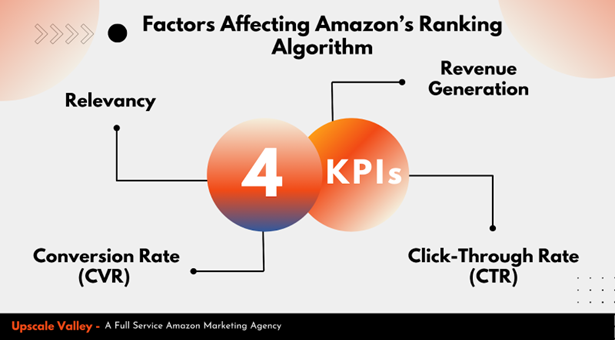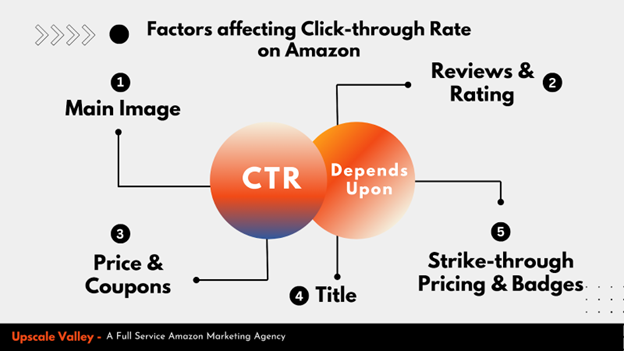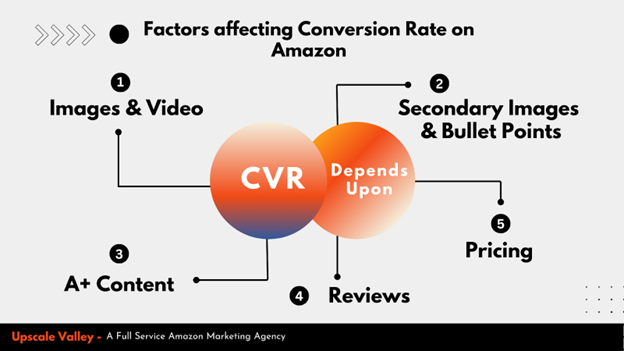Have you ever noticed that most shoppers don’t even bother looking at the second page of Amazon search results? In fact, the top three organic listings capture the majority of clicks and sales. If your product isn’t ranking well, it’s practically invisible to potential buyers—no matter how great it is.
Ranking high on Amazon isn’t just about visibility; it’s about trust, authority, and long-term profitability. Customers naturally assume that top-ranking products are the best choices, and Amazon’s algorithm prioritizes listings that generate strong sales. The better your ranking, the more exposure you get, leading to higher conversions, lower ad costs, and consistent revenue growth.
But here’s the reality: Amazon’s ranking algorithm isn’t random. It follows a pattern, and if you understand it, you can strategically position your product for success. In this guide, we’ll break down exactly how Amazon’s ranking algorithm works, what are the amazon ranking factors, and most importantly—how you can take control of it and dominate your niche. Let’s dive in and start climbing the ranks!
Table of Content
- Factors Affecting Amazon’s Ranking Algorithm
- How These Factors Are Interconnected
- Lookback Periods and Amazon’s Relevancy Algorithm
- Contribution of External Traffic in boosting Ranks
- Amazon A9 and A10 Algorithm Overviews
- How to Improve the Ranking of Your Product on Amazon
- Identifying Your Position on Relevant Keywords
- The Role of SEO and PPC in Ranking
- Factors That Influence Click-through Rate (CTR)
- The Impact of the Main Image on Click-Through Rate (CTR)
- Factors That Influence Conversion Rate (CVR)
- Running PPC Campaigns for Keyword Ranking
- The Importance of Relevance in Ranking
- How Amazon Assigns the Right Category to Your Product
- The Importance of Keyword Selection
- Why Amazon May Reassign Your Product to a Different Category
- Final Thoughts
Factors Affecting Amazon’s Ranking Algorithm
Amazon’s ranking algorithm, commonly referred to as A9 (or A10, as some sellers call the newer version), relies on a combination of data-driven factors to determine where your product appears in search results. The main Key performance indicator (KPIs) that influence in ranking:

1. Relevancy
Amazon determines how relevant your product is to a customer’s search query. The more relevant your product, the higher it ranks in search results.
2. Click-Through Rate (CTR)
CTR measures how often people click on your listing compared to your competitors. A higher CTR increases the chances of boosting keyword rankings.
3. Conversion Rate (CVR)
The better your conversion rate, the faster your product ranks. A strong CVR indicates that customers find your product valuable and purchase it frequently.
4. Revenue Generation
Amazon prioritizes products that generate higher revenue because it benefits both sellers and the platform. High revenue signifies strong sales performance, leading to better rankings.
These KPIs signal to Amazon that your product is valuable, and its algorithm will subsequently boost your ranking.
If you want our experts to design a full-fledged strategy to rank your product on Amazon’s top spots, then connect with us now and allow us to perform a complete audit of your account and highlight all the gaps and areas needing improvement.
How These Factors Are Interconnected
Now let’s discuss that how these factors are interconnected with each other
Most of Amazon sales happen in the Top 3 spots. That’s why if you are aiming to get long term success on Amazon, you must secure those positions.
Many sellers believe that increasing just the Click-Through Rate (CTR) will negatively impact their Conversion Rate (CVR) but that’s a misconception. If your listing is perfectly optimized and compelling enough to hold the customer’s attention, there’s no reason they will leave the product page without making a purchase.
The First Step: Convincing the Customer
When a shopper types a search query on Amazon and your product appears in the search results, your first goal is to convince them to click on your listing.
All four ranking factors—CTR, CVR, Relevancy, and Revenue Generation—are interconnected. A higher CTR signals Amazon to boost your listing, but if CTR increases while CVR remains low, your ranking will drop. Amazon’s algorithm interprets this as a sign that your product is not delivering enough value, leading to a decline in ranking.
There is no fixed percentage or number that guarantees ranking boosts. Amazon analyzes and compares your product’s performance against your niche competitors and the best-performing listings.
Lookback Periods and Amazon’s Relevancy Algorithm
Amazon uses various lookback periods to determine product relevance, including 3 days, 7 days, 15 days, 30 days, 60 days, 90 days, 180 days, and 365 days.
The most recent data carries the highest weight in Amazon’s ranking algorithm. Fresh performance metrics contribute more significantly to ranking improvements than older data.
If your recent performance metrics (CTR, CVR, and revenue) are strong, Amazon will suddenly boost your ranking. On the other hand, if your recent data is poor, it will negatively impact your listing.
Contribution of External Traffic in boosting Ranks
Some sellers mistakenly believe that external traffic doesn’t impact ranking. However, under Amazon’s A10 algorithm, external traffic also contributes positively to your overall ranking performance. All the external traffic that comes from either influencer marketing, Google Ads, or any other source ultimately generates revenue not just for us but also for Amazon, as Amazon charges fees for every sale that happens on its platform. Due to the increase in revenue, Amazon will boost the ranks of the keywords that are indexed with our listing.
Amazon A9 and A10 Algorithm Overview
Amazon A9 Algorithm
Amazon’s A9 algorithm determines product rankings based on:
- Keyword Relevance: Proper keyword placement in titles, descriptions, and backend fields boosts visibility.
- Conversion Rate (CVR): High sales and strong unit session percentage signal product success.
- Reviews & Ratings: Positive reviews enhance trust and ranking.
- Click-Through Rate (CTR): Attractive titles and images drive clicks, improving rankings.
- Seller Performance: Fast fulfillment, low defect rates, and responsive customer service matter.
- Amazon Prime: FBA products with Prime eligibility often rank higher.
- Sales Velocity: Fast-selling products gain better positioning.
- Inventory Availability: Consistently stocked products perform better in search results.
Amazon A10 Algorithm
Amazon’s A10 algorithm refines rankings by prioritizing relevance, customer behavior, and external signals. Key factors include:
- Relevance: Listings with precise keyword matching rank higher.
- Sales History & Velocity: Consistent and growing sales boost ranking.
- Customer Engagement: High CTR, conversion rates, and positive reviews enhance visibility.
- Pricing: Competitive pricing increases appeal and sales.
- Inventory Levels: Adequate stock ensures better ranking stability.
- External Traffic & Mentions: Social media buzz and off-Amazon sales improve ranking.
- Fulfillment Method: FBA products benefit from Amazon’s preference for fast, reliable shipping.
- Seller Authority: High seller ratings, strong service, and fast order fulfillment increase credibility.
- Advertising: PPC campaigns can boost visibility and drive organic ranking improvements.
By aligning with A10’s refined ranking criteria, sellers can achieve stronger positioning, better engagement, and sustained sales growth.
How to Improve the Ranking of Your Product on Amazon
Ranking on a particular keyword and maintaining that rank is not something you only focus on at the start. Instead, it is a continuous effort throughout your entire Amazon journey. To rank and sustain your position, you need to implement ongoing strategies and monitor your performance consistently.
Identifying Your Position on Relevant Keywords
The first step is to identify your current position on the relevant keywords. These keywords can be found by running a Cerebro analysis on Helium 10 using the ASINs of top competitors, or conducting a Data Dive, or extracting data through the Search Query Performance (SQP) report. Once you have shortlisted all the potential relevant keywords, create a master keyword list and categorize them into different keyword roots. This means grouping together similar keywords that belong to the same root. When aiming to rank for a particular keyword, it is best to focus on just one or two keywords at a time and put full effort into these keyword and keep track of performance on daily basis, Or if you are targeting multiple keywords make sure that all belong to the same root, allowing Amazon’s algorithm to recognize and reinforce the ranking signals more effectively.
The Role of SEO and PPC in Ranking
Simply running PPC campaigns on keywords will not automatically improve rankings. Instead, your listing must be optimized with those keywords to ensure maximum impact. Keyword placement within the listing significantly affects ranking weight:
- Title (First 80 Characters): Carries the highest ranking weight.
- Title (81-150 Characters): Has a slightly lower weight.
- Bullet Points: Play a crucial role in ranking.
- Backend Search Terms: Important for indexing.
- Description: Has the lowest ranking weight but still it may contribute.
Ensuring that the targeted keyword is placed within the title will have the most significant impact, especially within the first 80 characters. The next most important section is the bullet points, followed by backend search terms. The description and image tags also contribute, though to a lesser extent.
If you want to achieve and maintain high rankings, you must optimize your listing from an SEO perspective. PPC alone will not be sufficient.
If you want to learn more deeply about what Amazon PPC is and what strategy you should follow for PPC campaigns when launching a new product, then check out our in-depth guide on Amazon PPC Basics and Launch Strategy.
And in case you are running an established brand with multiple ASINs and a handsome monthly revenue, and you're experiencing a decline in your PPC performance, then you may need to check out our in-depth guide on PPC Optimization for Established Brands, which covers all the possible scenarios for the decline in performance along with the required solutions.
Factors That Influence Click-through Rate (CTR)
The very first goal and focus of Amazon sellers is to grab the customer’s attention and get them to click on their listing. So, we need to first understand what factors affect the Click-Through Rate (CTR) of your listing.

Once a buyer searches for a product, they usually already have the desire to purchase. Your goal is to stand out among competitors and convince them to click on your listing instead of your competitor’s. Some of the key elements that greatly influence CTR include:
The Impact of the Main Image on Click-Through Rate (CTR)
One of the most overlooked aspects of ranking is the role of the main image. Your main image significantly affects CTR, which directly impacts ranking (if it drives good conversions). If your main image is visually compelling, it will increase the likelihood of customers clicking on your product. Once a customer clicks, the conversion depends on how well your listing is optimized and the overall value your product offers. However, the first step in the purchasing journey is getting the customer to click, and your main image plays the most important role in that.
So the CTR is the first and one of the most important amazon ranking factors now let’s look into the factors that affect the conversion rate of your listing
Factors That Influence Conversion Rate (CVR)
Getting clicks is just the beginning. The next step is convincing buyers to add your product to their cart and complete the purchase. If your listing receives a high volume of visitors but has a low conversion rate, it could indicate issues such as poor product presentation, weak listing copy, or unappealing pricing. Ensuring a well-optimized listing with high-quality images, engaging bullet points, and competitive pricing will improve your conversion rate and, consequently, your keyword rankings.

If you want our experts to check whether your listing is perfectly optimized or not and conduct a thorough audit of your account then connect with us now and schedule a free consultation call with Dr. Owais Amin
Running PPC Campaigns for Keyword Ranking
When aiming to rank on a particular group of keywords, it is crucial to choose your keywords wisely. At any given time, either focus on one or two keywords or select multiple keywords that share the same root to avoid confusing the algorithm. Once you have selected the keywords, set up PPC campaigns with a single keyword per campaign. Use exact match targeting and allocate an open budget to ensure your campaigns run effectively. Monitor your stock levels to avoid going out of stock as if it’ll affect negatively on your listing, set bids at a competitive level (not too low compared to the suggested bid), and apply moderate Top of Search (TOS) placement. The most important part of running PPC campaigns is tracking keyword ranking daily to analyze campaign performance and assess your overall product success.
PPC does not directly impact listing optimization, but it serves as a mechanism to drive sales. The higher your revenue generation, the higher your chances of ranking. Revenue generation plays a significant role in boosting rankings, along with CTR and CVR. This is why external traffic sources like Google Ads and Influencer Marketing also contribute positively to ranking. These external marketing efforts drive more sales, which ultimately enhances your keyword ranking on Amazon.
The Importance of Relevance in Ranking
Amazon ranks products based on how relevant they are to the search query entered by a customer. This is why the keywords you aim to rank for must be perfectly relevant to your listing and product. If your keywords do not match well with your product listing, the algorithm will not boost them effectively.
How Amazon Assigns the Right Category to Your Product
Amazon assigns products to categories based on the keywords used in the listing. Each subcategory on amazon has a predefined set of associated keywords, and Amazon maps products to categories accordingly. The process works as follows:
- Amazon’s Algorithm Scans Your Listing: It reads all the keywords present in your listing, particularly in the title.
- Keyword Matching: The algorithm compares these keywords with its internal keyword list for different categories.
- Category Assignment: Your product is assigned to the subcategory that best matches its keywords.
This means that Amazon essentially maps your keywords to its internal database and assigns your product to the most relevant category.
The Importance of Keyword Selection
Selecting the right keywords is essential for proper indexing and competitiveness. Different variations of the same keyword may result in different product placements. For example:
Using the right keyword variations ensures that your product is indexed in the correct category and appears alongside the most relevant competitors, increasing your chances of conversion.
Why Amazon May Reassign Your Product to a Different Category
Although you manually select a category when uploading a product, Amazon’s algorithm may later reassign it based on the listing’s keywords. This happens due to:
- Amazon’s Keyword Mapping: Each subcategory has a predefined keyword list.
- Algorithm-Based Reassignment: Amazon scans your listing (title, bullet points, description) and maps your keywords to its internal database.
- Automatic Category Adjustment: If Amazon finds that most of your keywords align with a different subcategory, it may override your selected category and place your product in a more relevant one that’s why adding the perfect keywords in the listing is crucial otherwise sometime we chooses the correct category but amazon change it because our listing is not optimized for that relevant category.
How to Verify Your Product’s Categorization
To ensure that Amazon has assigned your product to the correct category, check your product’s category in the Category Listing Report of Amazon. You can also verify that the category is rightly assigned or not while setting up PPC campaigns, analyze Amazon’s suggested keywords. If the recommended keywords closely match your product, it indicates that your categorization is correct.
Correct categorization is crucial for better visibility, ranking, and effective ad targeting. Always monitor your listing to ensure that Amazon places your product in the most relevant category.
Final Thoughts
Improving and maintaining keyword ranking on Amazon requires a combination of strategies, including listing optimization, PPC campaigns, external traffic sources, and proper categorization. Relevancy is the key factor that drives keyword ranking, and ensuring that your listing is properly optimized with high-quality images, compelling copy, and relevant keywords will significantly boost your chances of success. Focus on long-term ranking strategies, track your performance consistently, and make data-driven adjustments to stay ahead in the competitive Amazon marketplace.
Ready to take control of your Amazon rankings? Book a FREE strategy session with our experts and let’s help you dominate your niche.




.avif)
.svg)


.png)
.jpg)
.svg)







